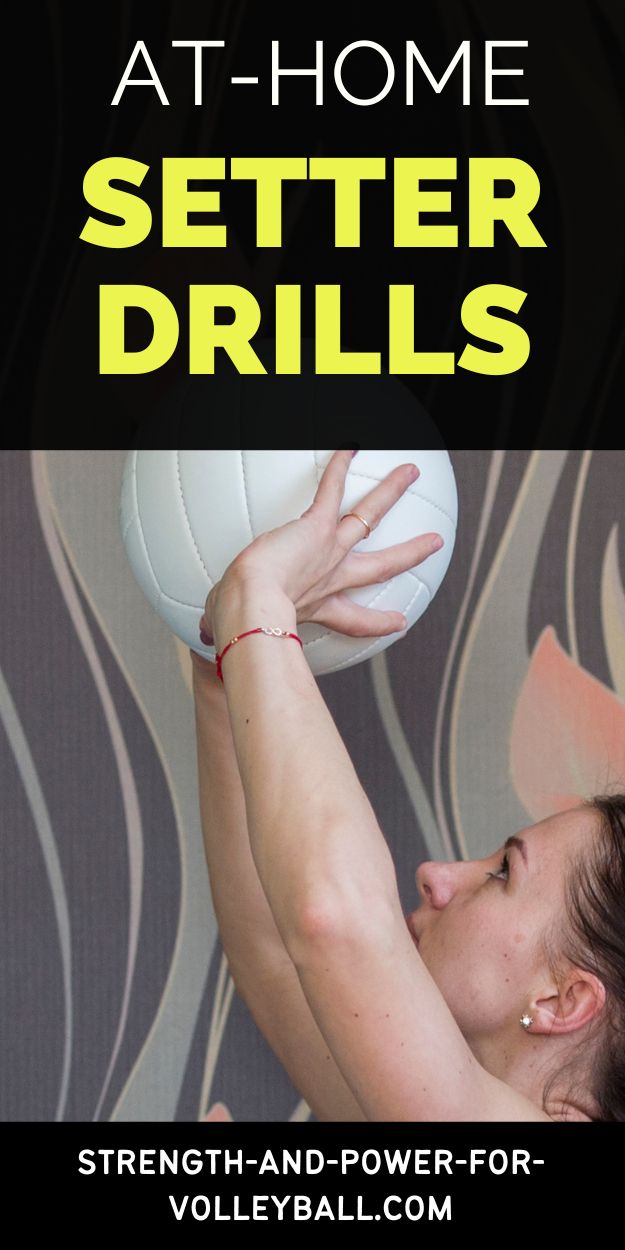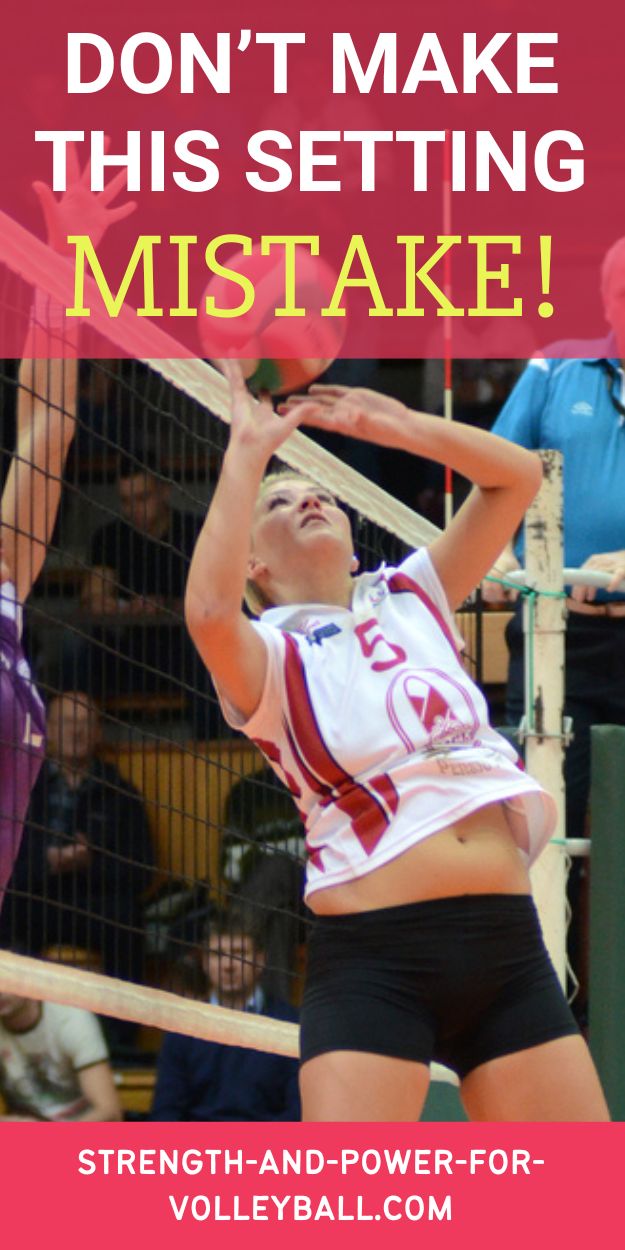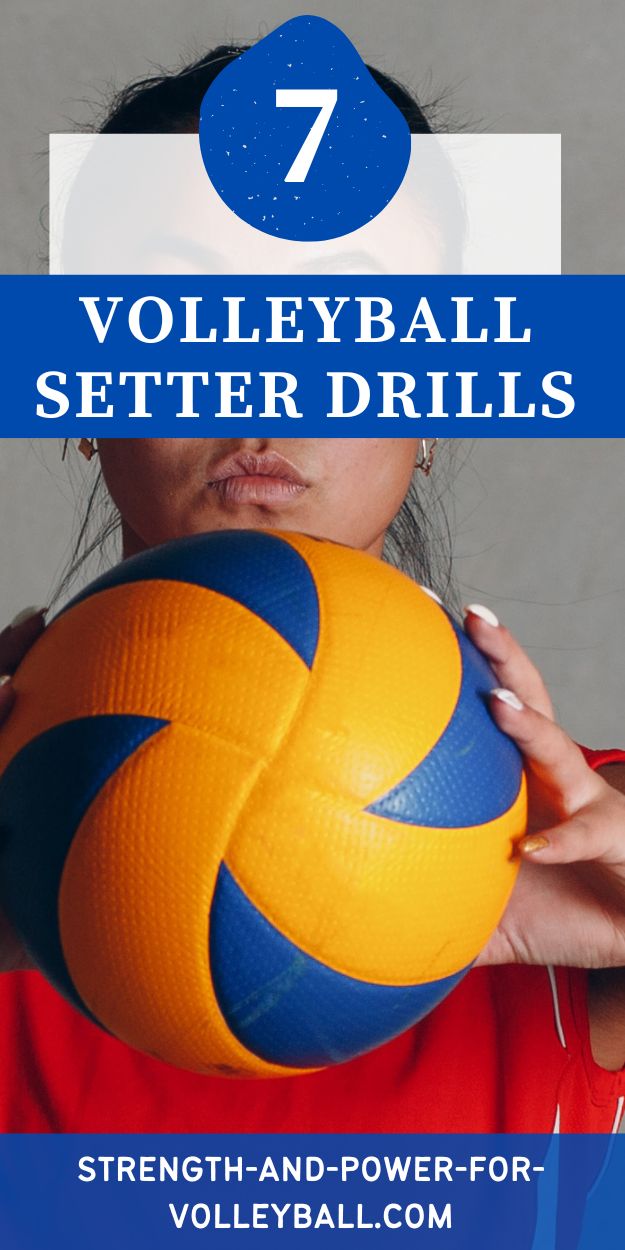Volleyball Setter Drills
7 Drills to Master
Here are 7 volleyball setter drills all volleyball setters should learn. Master these 7 volleyball drills and you're sure to become a great setter.
Volleyball Setter Drills
1) Symmetrical Hands. When you hand set, always have your hands in a symmetrical position. This means your hands should mirror each other. The index fingers and thumbs form a triangle. Before contact, during contact, and after contact, the hands should stay in this position. When you are doing a setting drill, look at your hand position before contact and after contact. Are your hands symmetrical? Work to keep the hands in a symmetrical position. There are many benefits to doing this.
First, this will help you contact the ball in the same way consistently. For example, you want all fingers contacting the ball. You want the same part of the fingers of each hand contacting the ball in the same way. When you have a symmetrical contact, the ball will be easier to control. A symmetrical contact will lead to consistent setting. You'll find yourself hitting the target more consistently. This symmetrical hand position will also help prevent you from illegally contacting on the ball.
2) Seated Target Setting. Practice setting a ball from a seated position. The focus here is on the hands. Focus on a consistent hand setting motion. By sitting, you are taking the feet out of the equation. Aim for a target. Focus on the pre-contact hand position and post-contact hand position. Focus on a consistent fluid hand setting motion. Work to become consistent setting to a target from a seated position.
3) Wall Setting Rapid Fire. For this drill you need a ball and a wall. Stand close to the wall with hands up high above the head. Focus on the hands and wrists. Don't use the arms. Get into the hand setting position and dribble the ball against the wall as fast as you can. Start about 6 inches from the wall. As you become better at the drill, work to distance yourself from the wall.
If you found these tips to be helpful, please save this to your Pinterest Board.
4) High Hand Back Setting. This drill can be done from a seated position or standing. The goal here is to focus on getting the ball in and out of the hands as fast as you can. There shouldn't be a lot of arm movement. Focus on fast hands and wrists. Imagine the ball gliding back across the top of the head. Slightly turn the body quickly to the right as you set the ball. A quick turn creates momentum and helps you set the ball further.
5) Cross Court Target Setting. To work on setting distance, practice setting the ball cross court. When possible, I recommend ending your steps by stepping onto the right foot. This is for both setting the ball to the outside, middle, and back sets. To set further, you need to contact the ball high and keep the ball high. Don't make the mistake of trying to use arms to set the ball further. I don't' recommend bending the elbows to catch and throw the ball. Focus on keeping the ball high and getting the ball in and out of the hands as fast as possible.
If you found these tips to be helpful, please save this to your Pinterest Board.
6) Face the Ball, Turn and Set. When possible, you want to be at the net facing the teammate that's passing the ball. Always face the ball. As the ball comes to you, make a quick move to the right. This quick right turn as you are receiving the ball will help you get momentum for setting. This quick movement will also help you be deceptive with your set. The harder it is for your opponent to read you, the harder it will be for the opponent to get in position to block and play defense.
7) Off the Net, Turn and Set. Practice the footwork for coming off the net and turning to set the ball. Setter footwork is critical. Coaches will often make the mistake of just teaching the setter to get to the ball as fast as possible. We want to be quick, but we also want to be efficient. Use efficient footwork for getting in position. Don't make the mistake of not training the feet.
To be successful as setting, you must get in position to set. Your ability to read the ball being passed and your footwork skills for getting in position are critical.
All setters should practice the footwork patterns for getting in position to set. There is footwork to master for coming off the net and moving forward and backward along the net. The more a setter practices these movements, the more comfortable the setter will be moving to get to the ball.
For more on setter footwork, watch the video here.
If you found these volleyball setter drills to be helpful, please save this to your Pinterest Board.


